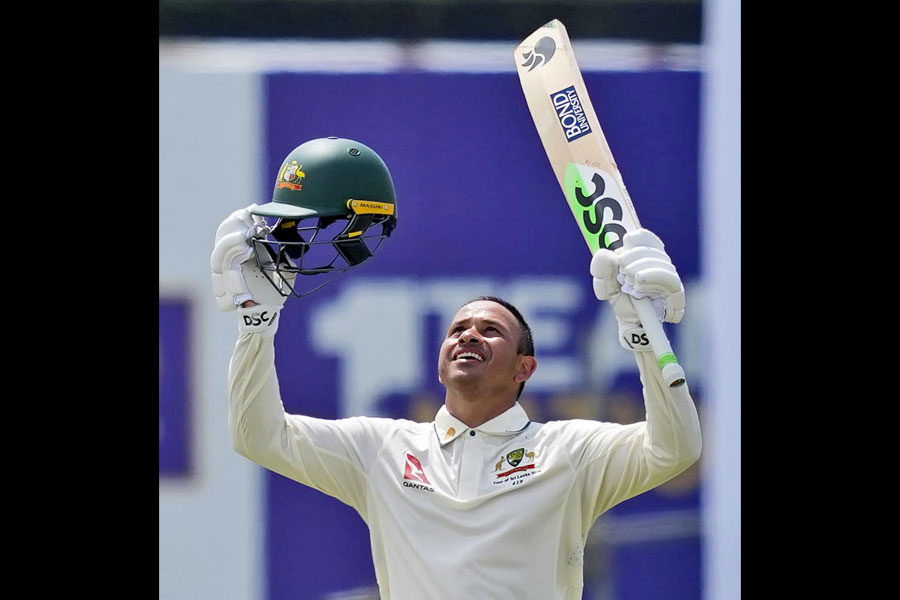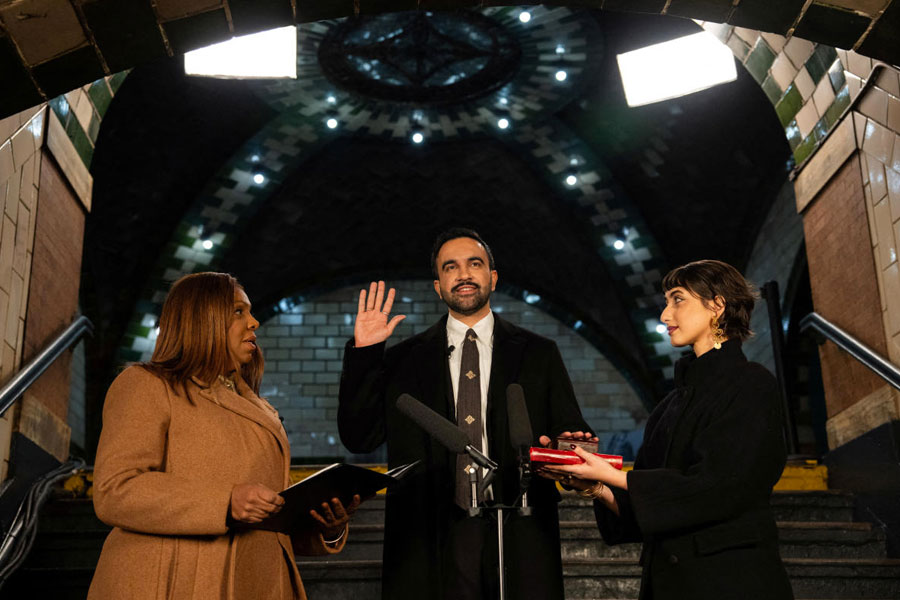Twenty feet or so in height, two hefty, towering, rectangular fibreglass blocks, topped with sliced orbs for heads, dwarf the main gate of the complex, inducing necks to crane upwards for a closer appraisal: they confirm the magnetism of mammoth scale for Paresh Maity. Upstairs, on the wall across the entrance to CIMA, a circular canvas with a 96” diameter presides over the show — a stunning contrast with its red, hanging tongue amid deep black, made with coloured glass: Mahakali.
But then, for Maity, formidable scale and feather-light brushstrokes are all part of a day’s play. If it’s the delicate, luminous blurs and shifts in the density and tone of watercolour that compose his signature, a polymorphous brush has also, at times, battled belligerent oil and acrylic. At other times, abjuring colour and paint, the artist distilled scenes into reticent haikus of nervy black lines on virgin white paper. And since moulding clay into form was what obsessed him from his boyhood in Midnapore, sculpture and, then, installations became part of his expanding oeuvre. Finally, how could the moving image not seduce his catholicity? Sure enough, his video art was seen in his last show in town.
As it happens, Maity’s solo show, Infinite Light, touring four metros and currently on view at CIMA till January 31, covers the entire range of this restless, irrepressible creativity, picturesquely documented in his two films. It also, incidentally, marks his debut in ceramics.
Light is, indeed, infinite in his watercolours. Especially when its effulgence is muffled by a tiptoeing dusk (Stope) that turns the sky into a porous red as a fatigued sun reclines on dark mountain slopes. However, in an earlier set on board, Shimla, a vertical arrangement of jostling conical roofs that he repeats elsewhere, he turned the transparent medium dry and textured.
Many of the paintings displayed are in oil and acrylic, and mostly on board, done between 1992 and 1999. An Impression, for example, is a series that’s abstract and expressionist in its turbulence of impasto eddies and ridges, with chrome yellow and red dominating the palette. But Memory Lane, Nos 35-44, a suite done simultaneously, doesn’t eliminate form, as houses and boats get caught in thickets of paint. Clearly, Maity was searching for his individual idiom at this stage.
Part of crafting that idiom was the ploy of packaging plucked excerpts of objects into racy kaleidoscopes of splintered images. This is seen, for example, in his tributes to Varanasi, which inspired sets of paintings of different sizes at different points to evoke the age and the ethos of the city through its river and ghats, boats and houses, umbrellas and trees, in canvases like Devotion, Quietude and Panorama I, all in oil and acrylic. Their scale suggests both a correlative to the religio-cultural magnitude of the ancient site and the vastness of Nature with its magic of elusive lights that a painting dares to confine within the limits of a canvas. Even if the canvas is, as in The Coast, all of 60” X 120” (picture).
Faces, too, are fractured with Picassoesque impishness into sharp, elongated noses, little mouths and decorative eyes in paintings with leading, teasing titles like Gossip and Onlooker. The stylised abbreviation of tribal-folk syntax, mined by Maity in the very first bronze heads he had shown in 2008, appears, once again, in striking sculptures like The Balance and Primordial. And now his ceramic pieces stare back at the viewer with the same frontal eyes in wonder or tolerant amusement: another testament to Maity’s insatiable hunger for more.











